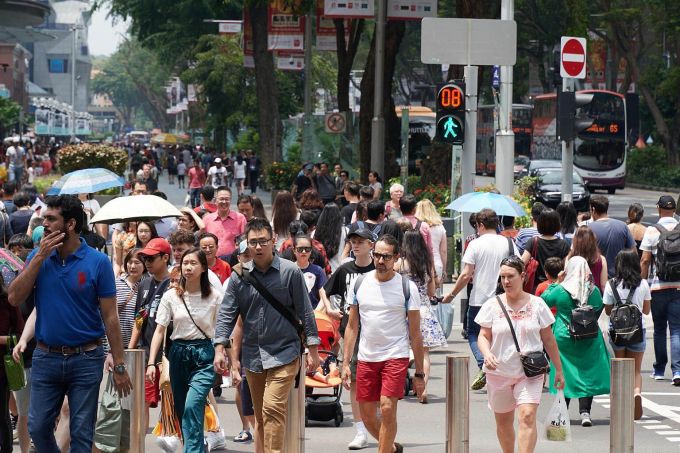Singapore consumer prices edge up 0.2% in March, below economist expectations
SINGAPORE’S inflation remained muted in March, as the cost of food and services rose more slowly compared with the preceding month.
The consumer price index – the main measure of inflation – edged up 0.2 per cent in March compared with the same month last year, according to Department of Statistics data released on Monday.
This was below February’s 0.5 per cent rise and also below economist estimates of a 0.5 per cent increase.
This came as services inflation slowed to 1.4 per cent in March from 1.9 per cent in the previous month, mainly reflecting smaller increases in air fares and holiday expenses a year earlier.
The cost of private road transport also fell by 0.6 per cent in March, reversing the 0.6 per cent increase in February, due to lower car prices following a decline in Certificate of Entitlement (COE) premiums.
Food inflation dipped to 1.4 per cent last month from 1.5 per cent in February, due to a smaller increase in the prices of non-cooked food items and prepared meals.
Core inflation – which strips out accommodation and private road transport costs to better gauge everyday expenses – eased to 1.5 per cent in March from 1.7 per cent in February, reflecting lower services inflation.
The brighter global economic outlook could push up imported inflation in the coming months, the Monetary Authority of Singapore (MAS) and the Ministry of Trade and Industry (MTI) said in a joint statement. For instance, global food commodity prices are projected to rise slightly.
Still, despite the “sporadic spikes” in global oil prices earlier in the year, they should ease in the quarters ahead as supply remains responsive.
Faster wage growth and strengthening domestic demand could also push up price levels across the economy in the months ahead, the MAS and the MTI noted.
“However, the extent of consumer price increases will remain moderate, as retail rents stay relatively subdued and firms’ pricing power may be constrained by market competition.”
Core inflation is expected to rise gradually over the year to come in at the upper half of the central bank’s 1 to 2 per cent forecast range.
Similarly, overall headline inflation is projected to be in the upper half of the zero to 1 per cent forecast range this year.
Economists noted that the stronger inflation outlook is in line with the central bank’s decision to return the Singapore dollar to a “modest and gradual appreciation path” in April after two years in a neutral stance.
The move lets the Singdollar gradually strengthen against a basket of currencies of Singapore’s major trading partners.
The central bank uses the exchange rate as its main monetary policy tool to strike a balance between inflation from overseas and economic growth.
A stronger currency – which corresponds to tighter monetary policy – counters inflation by making imports cheaper in Singapore dollar terms.
The MAS said that the move stemmed from its view that the economy is “likely to remain on its steady expansion path in 2018”, while upward pressure on core inflation is expected to persist.
ANZ economists Eugenia Victorino and Khoon Goh said that April’s inflation numbers “also look likely to be on the soft side”.
This means a much stronger recovery in employment and wages is required to push inflation towards the upper end of the central bank’s forecast range, and also for the MAS to tighten policy again at its next meeting in October.
“In this regard, we will be paying close attention to the first quarter labour market data to be released on Apr 27,” they added.
Source: http://www.businesstimes.com.sg/government-economy/singapore-consumer-prices-edge-up-02-in-march-below-economist-expectations


 English
English




